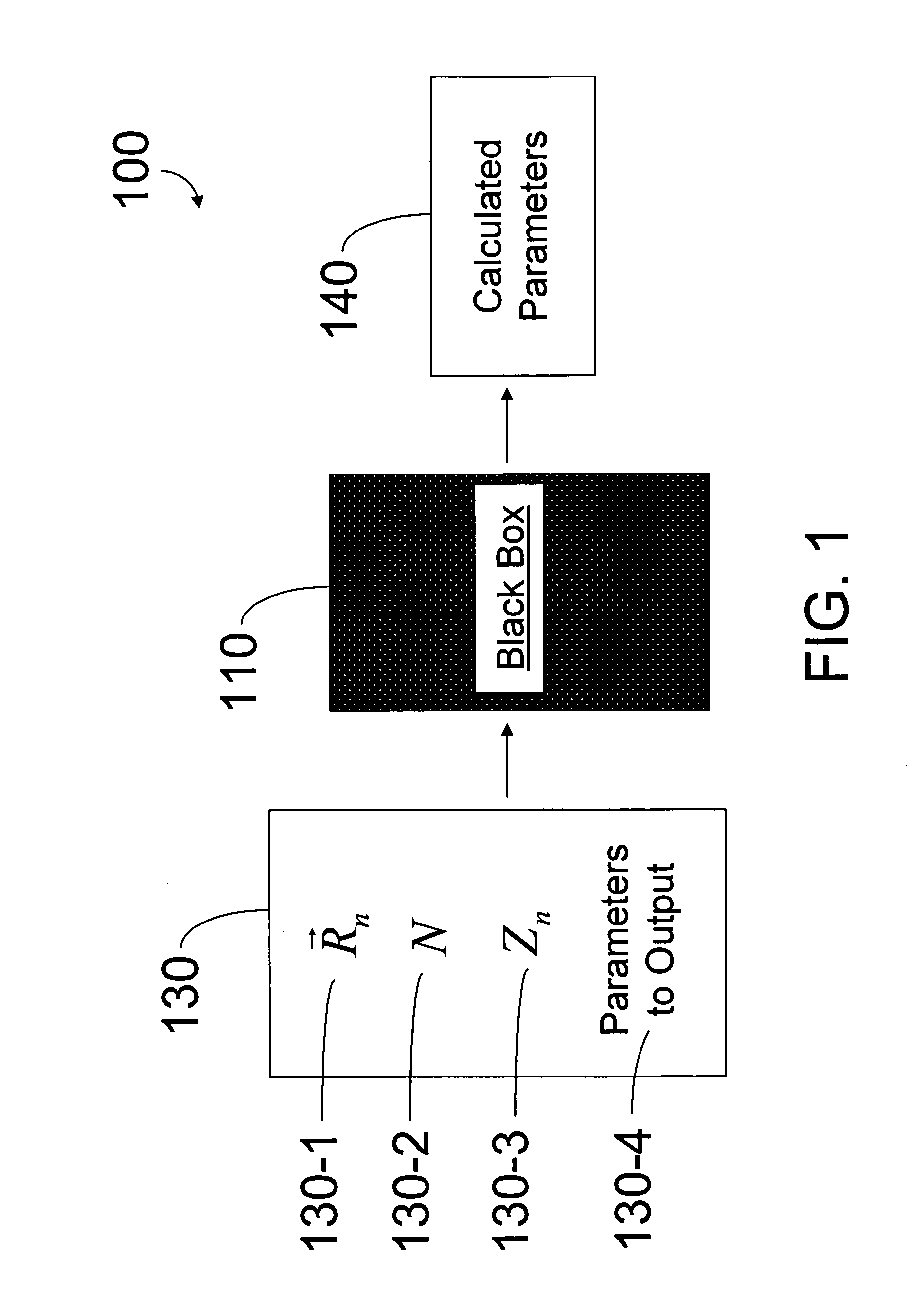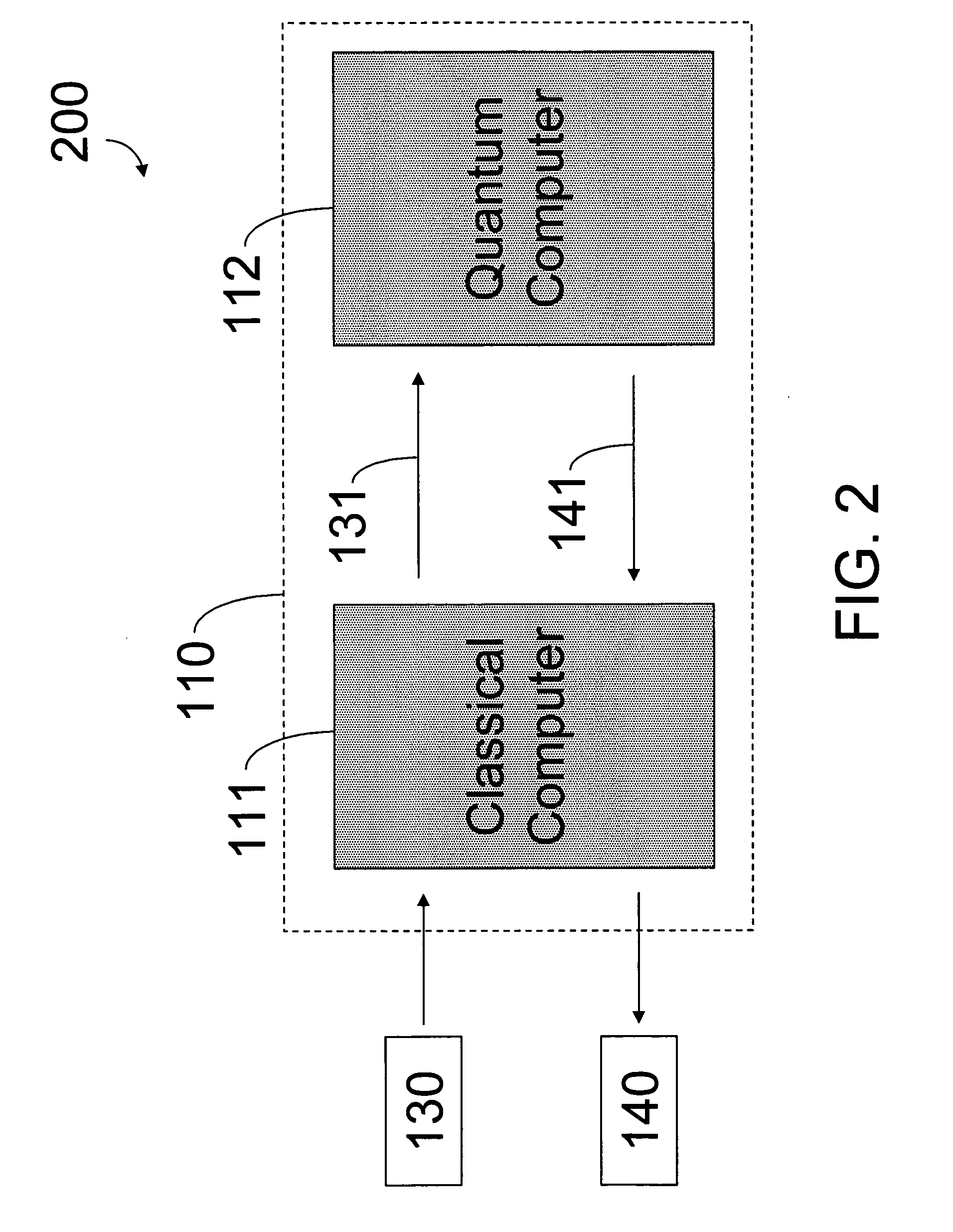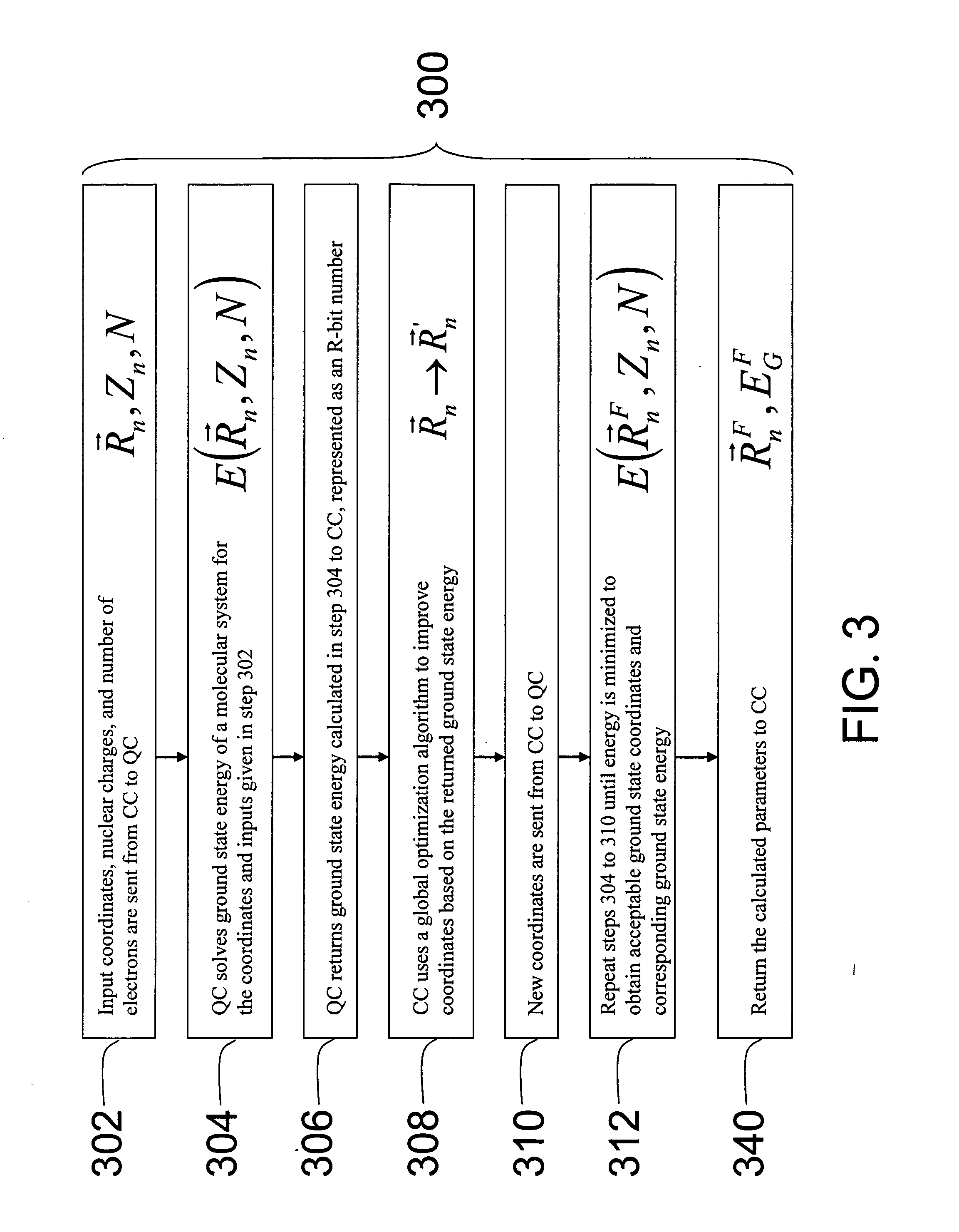Hybrid classical-quantum computer architecture for molecular modeling
a quantum computer and molecular modeling technology, applied in the field of quantum computing, can solve the problems of difficult computation, difficult and expensive, and computers do not have the physical resources to solve, and achieve the effect of reducing the complexity of computation
- Summary
- Abstract
- Description
- Claims
- Application Information
AI Technical Summary
Benefits of technology
Problems solved by technology
Method used
Image
Examples
Embodiment Construction
[0072] In accordance with the present invention, systems and methods that represent novel approaches to molecular modeling are provided.
[0073] 5.1 Black Box Technology
[0074] Referring to FIG. 1, one embodiment of the present invention provides a specific-purpose machine 110 that overcomes the exponential scaling of QM by employing a programmable QM system, called a quantum computer, to solve the QM equations for a set of desired parameters (e.g., a molecular system). This strategy reduces the physical resources required to solve the full QM equations from an exponential function of the number of electrons to a polynomial function of the number of electrons. Solving the full QM equations using the architecture of the present invention leads to significant increases in the sizes of systems that can be simulated, the accuracy of the solutions obtained, and the speed of calculation.
[0075] In an embodiment of the present invention, the inputs to machine 110 are aspects of a molecular ...
PUM
 Login to View More
Login to View More Abstract
Description
Claims
Application Information
 Login to View More
Login to View More - R&D
- Intellectual Property
- Life Sciences
- Materials
- Tech Scout
- Unparalleled Data Quality
- Higher Quality Content
- 60% Fewer Hallucinations
Browse by: Latest US Patents, China's latest patents, Technical Efficacy Thesaurus, Application Domain, Technology Topic, Popular Technical Reports.
© 2025 PatSnap. All rights reserved.Legal|Privacy policy|Modern Slavery Act Transparency Statement|Sitemap|About US| Contact US: help@patsnap.com



